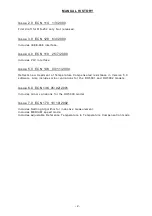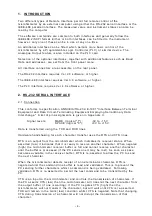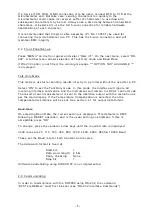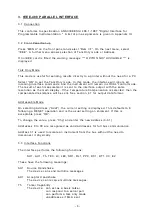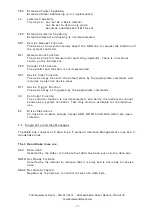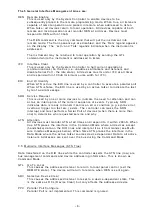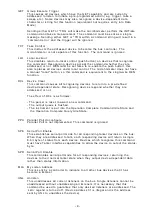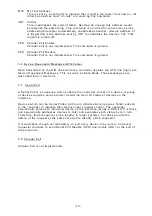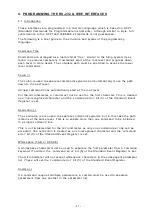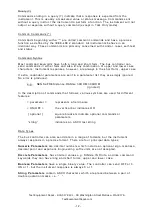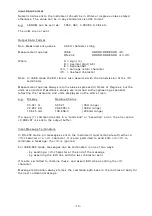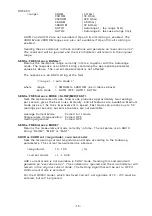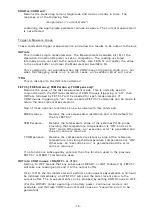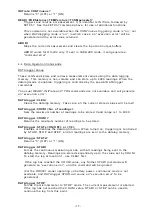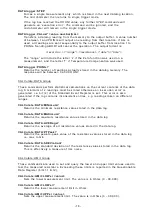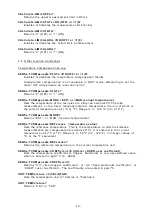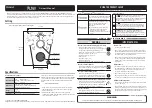
- 4 -
1. INTRODUCTION
Two different types of Remote Interface permit full remote control of the
microhmmeter by an external computer using either the RS-232 serial interface or the
IEEE-488 parallel interface. The measured value and instrument status can also be
read by the computer.
The software commands are common to both interfaces and generally follow the
IEEE488.2/SCPI format. Either or both interfaces can be fitted to the instrument,
however, only one of these can be in use at any one time.
An additional interface can be fitted which permits more basic control of the
microhmmeter by a Programmable Logic Controller (PLC) or similar device. The
Analogue Output feature is also included on the PLC card.
Selection of the optional interfaces, together with additional features such as Baud
Rate and addresses, are set from the front panel menu.
All interface connectors are accessible on the rear panel.
The RS-232 interface requires Ver 2.0 software, or higher.
The IEEE-488 interface requires Ver 3.0 software, or higher.
The PLC interface requires Ver 4.0 software, or higher.
2. RS-232 SERIAL INTERFACE
2.1 Connection
This conforms to specific ation ANSI/EIA/TIA-232-E-1991 "Interface Between Terminal
Equipment and Data Circuit-Terminating Equipment Employing Serial Binary Data
Interchange." A list of pin assignments is given in Appendix II.
Signal levels;
MARK (logical "1");
-3V to -15V
SPACE (logical "0");
+3V to +15V
Data is transferred using the TXD and RXD lines.
Hardware handshaking for each character transfer uses the RTS and CTS lines.
RTS is an output from the microhmmeter which indicates its receiver status. When
asserted (low) it indicates that it is ready to receive another character. When negated
(high) the microhmmeter receiver buffer is full and cannot receive another character
until the buffer is processed (if the PC sends one it may be lost). As soon as space
becomes available in the receiver buffer, RTS is re-asserted to allow the PC to send
the next character.
When the microhmmeter detects receipt of a line terminator character, RTS is
negated whilst the command line buffer is read and validated. This is to prevent the
PC sending further characters whilst a command is being validated. Following
validation, RTS is re-asserted to permit the next command to be transmitted by the
PC.
CTS is an input to the microhmmeter and controls the transmission of characters. If
the PC asserts CTS (low) then the microhmmeter will transmit the next character from
the output buffer (if one is waiting). If the PC negates CTS (high) then the
microhmmeter will not transmit the characte r, but will wait until CTS is re-asserted.
TXD will remain in the mark (low) condition whilst CTS is negated. Note that changing
CTS during transmission of a character will not disrupt the transmission of that
character.


